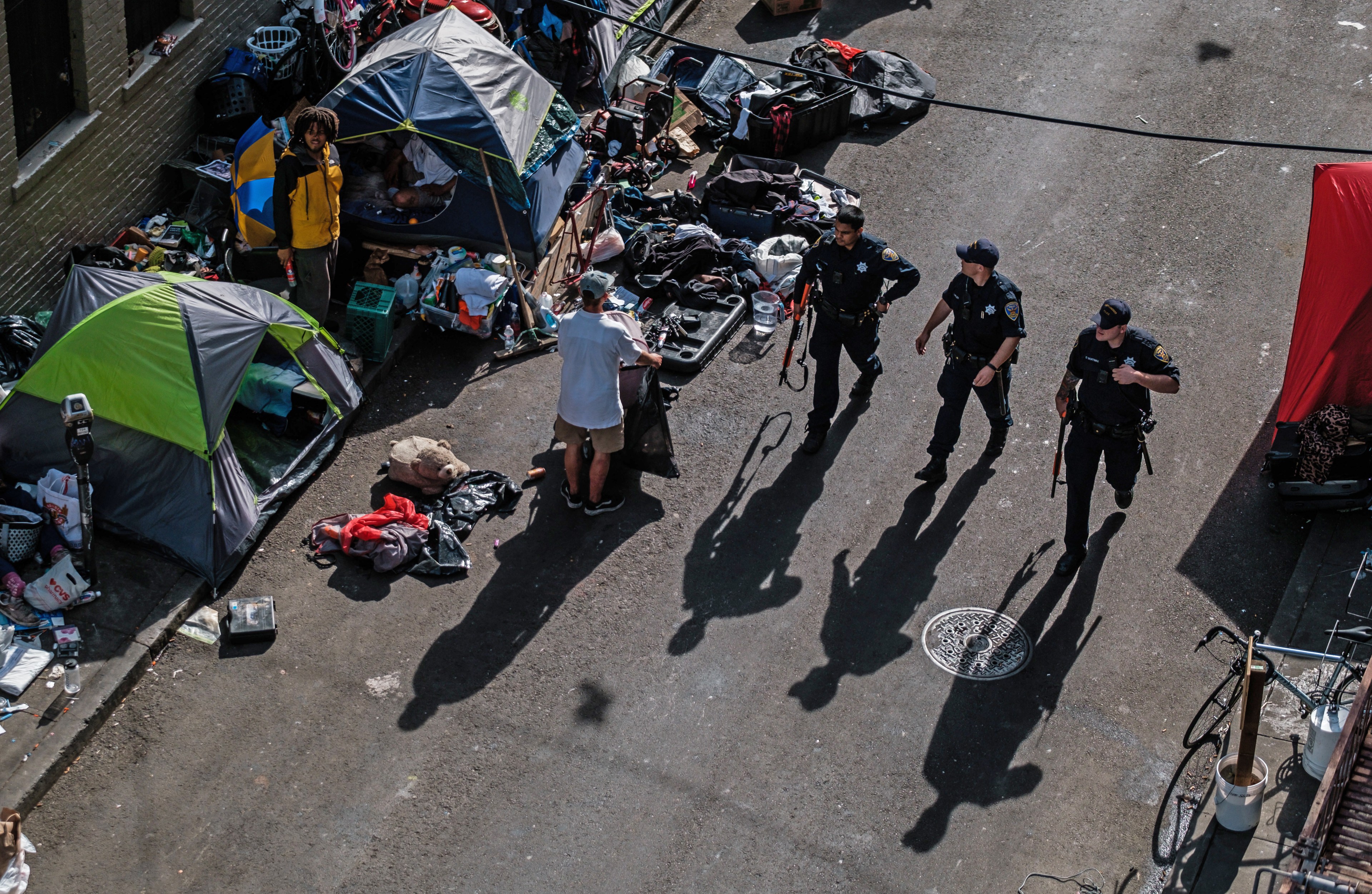San Francisco police have made 450 arrests of people who were suspected of being under the influence of drugs in public since a new program launched in late May.
The arrests have occurred alongside a number of other law enforcement initiatives aimed at the city’s open-air drug markets, with local police counting over 300 arrests of drug dealers in the last three months.
Federal and state law enforcement agencies have also descended on San Francisco in an attempt to break up the city’s drug networks in recent months. The California Highway Patrol has reported 100 drug arrests since April, according to a Friday press release issued by the Mayor’s Office.
“We refuse to sit on the sidelines as the fentanyl crisis intensifies,” Police Chief Bill Scott said in a statement.
Residents in several neighborhoods located in the city’s Downtown core have long complained of police inaction toward brazen drug activity. The city’s Downtown drug scene has taken a toll on businesses as well as the well-being of families in the hardest-hit neighborhoods.
But as the city increases its focus on drug arrests, debates have intensified over whether such enforcement initiatives are an effective way to address the health crisis.
Fatal overdoses in the city have climbed to record highs this year, with 71 people dying from drugs in July, according to preliminary data from the Chief Medical Examiner’s Office.
It’s unclear how many people who were arrested for public intoxication, if any, entered treatment after they were released.
Scott has said that police action can’t be the only component of the city’s plan to close the drug markets. The Department of Public Health, which has a budget of $3 billion this year, is also making efforts to expand access to drug rehabilitation programs—though many complain there is still a shortage of treatment beds in the city.
As city leaders scramble for solutions to the crisis, some officials have called for greater investments in rehabilitation programs in the city’s jails. The recent surge in drug arrests caused the local jail population to breach 1,000 people for the first time in years.
